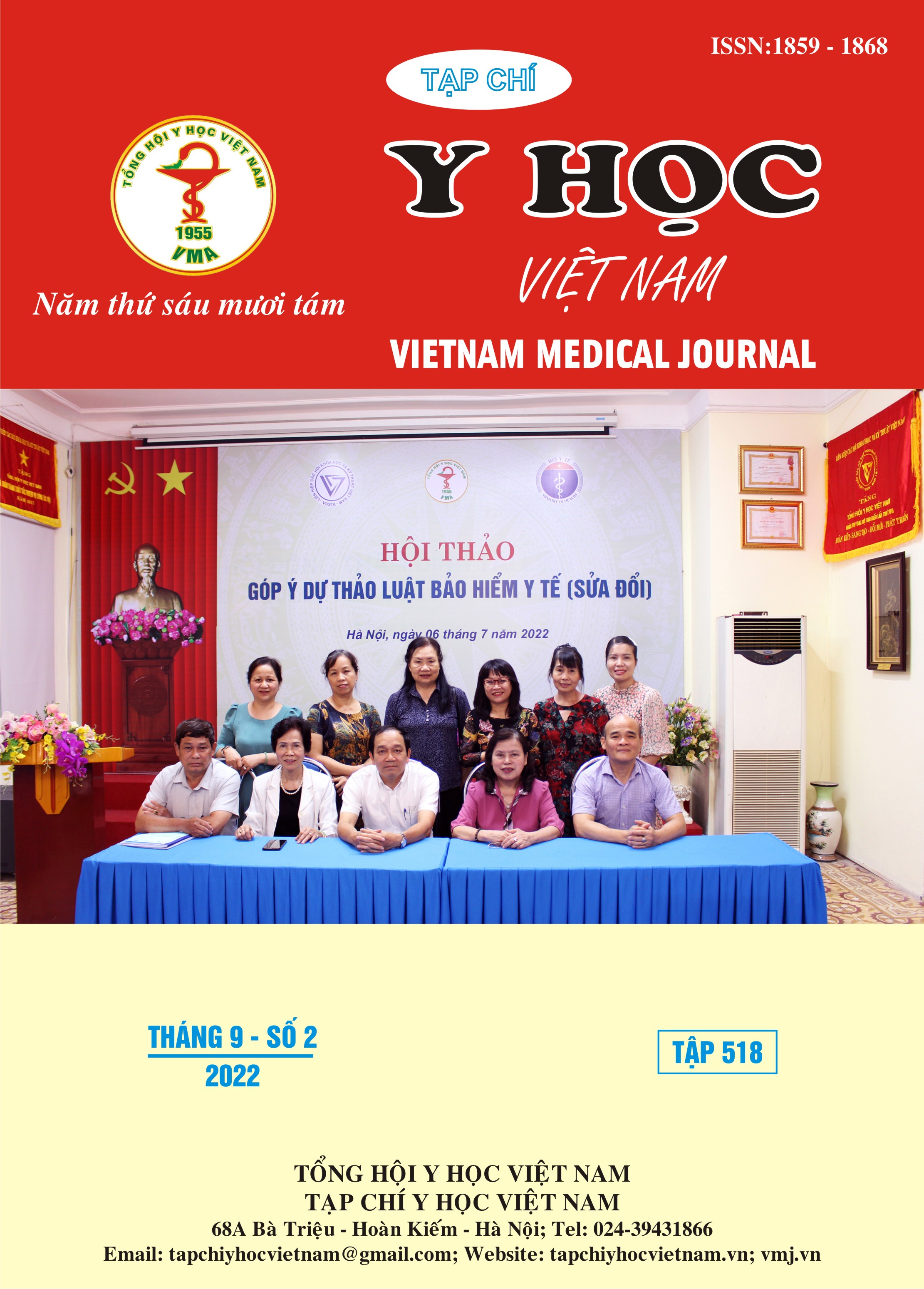CLINICAL AND NEUROIMAGING PRESENTATIONS OF LOW-GRADE BRAIN ATERIOVENOUS MALFORMATIONS
Main Article Content
Abstract
Objective: Describe clinical and neuroimaging presentations of a group of 65 patients with low-grade brain AVMs. Patients and Methods: Cross-sectional study of 65 patients with low-grade brain AVMs suffering microsurgery at the center of Neurosurgery in Viet Duc Hospital from 01/01/2017 – 30/04/2022. Results: The mean age at diagnosis was 34,5 ± 16,6. Male to female ratio: 1,24. The most common manifestation was headache (78,8%). The rate of bleeding on admission prevailed (58,5%). In the group with brain hemorrhage, the intraparenchymal hematoma was the most prevalent (94,7%). Supratentorial lesions accounted for more than 90% of brain AVMs. The type of the most popular feeders was the middle cerebral atery (MCA), accounting for 38,4%. Conclusions: Headache was the common clinical symptom, intraparenchymal hematoma was the main type of hemorrhage in the group of ruptured AVMs, the type of the most prevalent feeders was the middle cerebral atery.
Article Details
References
2. Công Phạm Văn Thành, Nhận xét đặc điểm lâm sàng, chẩn đoán hình ảnh, đánh giá kết quả phẫu thuật dị dạng động - tĩnh mạch não trên lều tiểu não vỡ, 2012, Đại Học Y Hà Nội.
3. Đặng Nguyễn Tất, Kết quả điều trị phẫu thuật dị dạng thông động tĩnh mạch não đường giữa vỡ, 2019, Đại Học Y Hà Nội.
4. Al-Shahi, R, and C, Warlow, A systematic review of the frequency and prognosis of arteriovenous malformations of the brain in adults, Brain, 2001, 124(Pt 10): p, 1900-26.
5. Spetzler, R,F, and N,A, Martin, A proposed grading system for arteriovenous malformations, J Neurosurg, 1986, 65(4): p, 476-83.
6. Potts, M,B,, et al,, Current surgical results with low-grade brain arteriovenous malformations, J Neurosurg, 2015, 122(4): p, 912-20.


